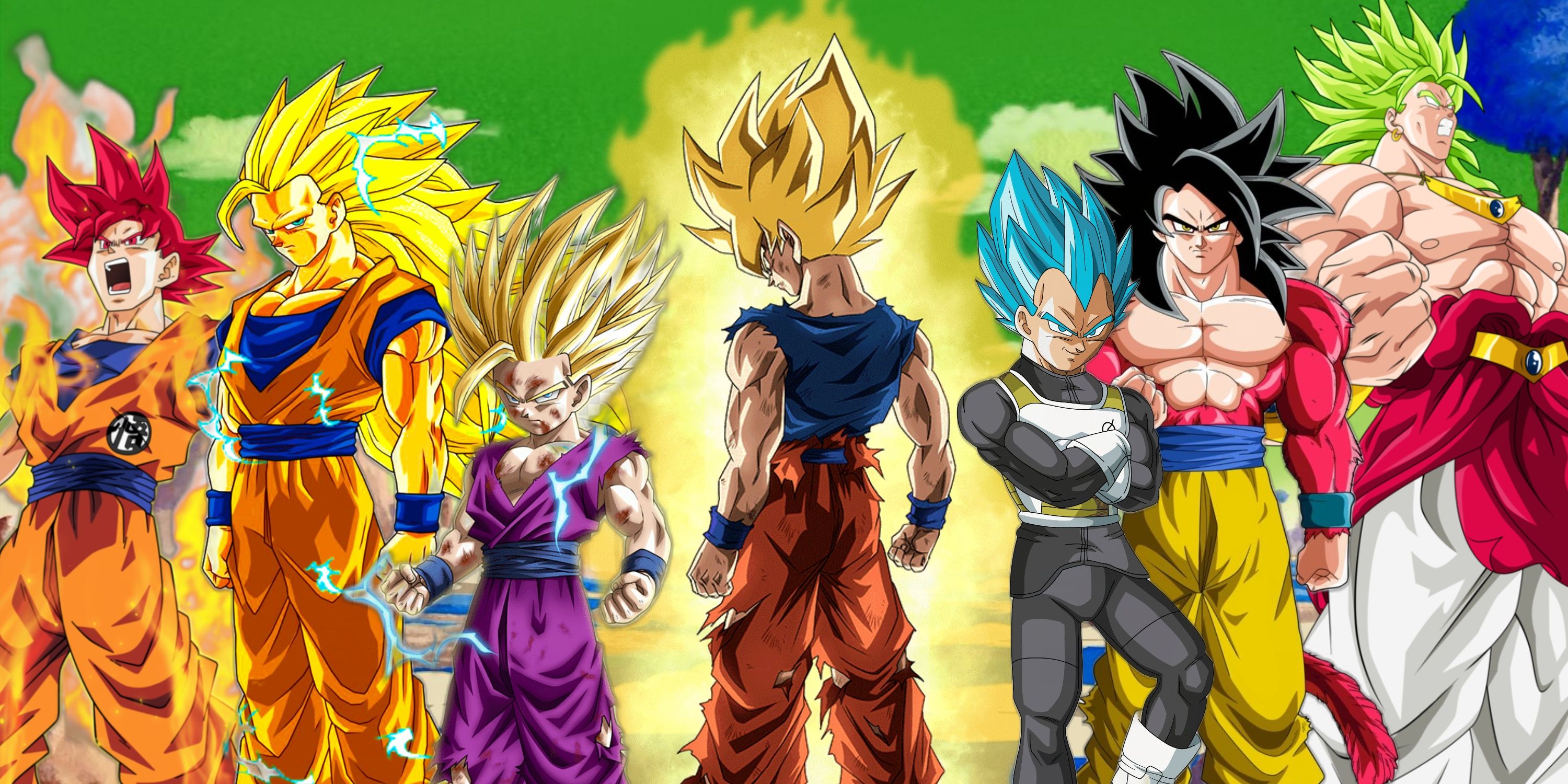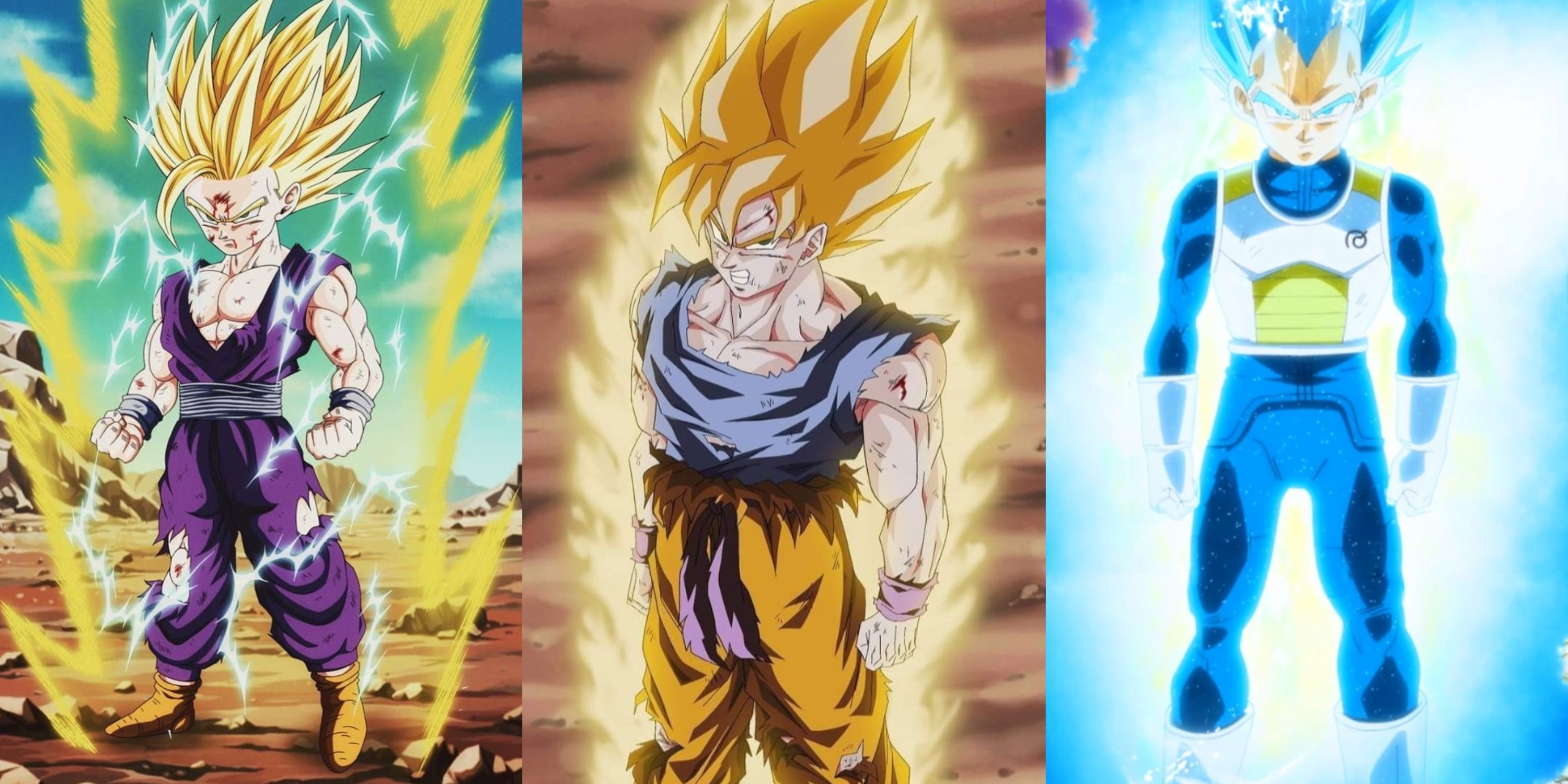Highlights
- Super Saiyan transformations in Dragon Ball Z set the standard for iconic character designs in shonen anime and manga.
- Each Super Saiyan form introduced in Dragon Ball Z and its subsequent series has a unique identity reflecting story themes.
- Super Saiyan 3 stands out as the most visually distinctive and powerful form, followed closely by the original Super Saiyan form.
One of Akira Toriyama's greatest contributions to the landscape of shonen anime and manga is in the long line of Super Saiyan transformations he devised throughout Dragon Ball Z and each subsequent entry in the Dragon Ball franchise. The debut of the original Super Saiyan form during the Frieza Saga was a landmark moment whose cultural impact has transcended all barriers in the years since.
Subsequently, quite a few shonen series have used this form from Dragon Ball Z as the template for the transformations introduced in their own franchises. At the same time, Toriyama expanded on the original form with several successive transformations in the Super Saiyan series, with each one having a distinct identity that reflected the themes of the story arc it was introduced in. As a consequence, there have been many memorable and awe-inspiring forms in this line, but which Super Saiyan form had the best design of them all?

Dragon Ball: Best Mentors, Ranked
The Dragon Team has been aided by a host of immensely powerful teachers during their adventures. These are the best among them.
What Makes An Iconic Super Saiyan Form?
Naturally, as defining plot elements in the overarching stories of many Dragon Ball sagas, the impact of each Super Saiyan transformation is inherently tied to the build up preceding it as well as the actual process behind its reveal. As such, the context behind a form's introduction is as critical to its narrative significance and legacy as the appearance and abilities of the form itself.
That being said, this comparison will look solely at the character designs of contending forms, how well they visually cohere with the arc they feature in, along with the specifics of how their designs tie into the series' ki-based power system. With these outlined parameters of comparison, there are a few transformations that emerge as clear favorites over their peers based on certain metrics, but may not score well in other departments.
The Varied World Of Super Saiyan Transformations
Beginning with the first Super Saiyan transformation, significant changes in character design can be seen with Super Saiyan Second and Third Grade, along with Super Saiyan 2, 3, and 4 during Dragon Ball Z and Dragon Ball GT. Further down the line, Dragon Ball Z: Battle of Gods added Super Saiyan God to the mix, whereas Dragon Ball Super introduced Super Saiyan Blue and Super Saiyan Rose.
Each form had an immense impact on the story arc in which it debuted, and they all played on aspects of the original Super Saiyan design to some degree. For instance, Super Saiyan conveyed Goku's enhanced power through a yellow aura along with blonde, upturned hair, piercing greenish-blue eyes, heightened muscle mass, and more stern facial features. This added an intimidating edge to his appearance, which aligned well with the overall theme behind the form's design of being a prophesied legendary warrior, whose emergence was foreshadowed throughout the Frieza Saga.
During the Cell Saga, Super Saiyan Second and Third Grade featured successive increases in muscle mass and aura, but not too much else in terms of design. Next, Super Saiyan 2 added a larger aura, spikier hair, and sparks of bioelectricity which effectively adhered to the more science fiction-leaning Cell Saga. Next, Super Saiyan 3, in its first appearance, featured a temporarily revived Goku who had a halo over his head, with a more menacing and exuberant design. Incorporating elaborate waist-length hair, the absence of eyebrows, a more pronounced brow ridge, a larger aura, and similarly expansive bioelectric sparks, this form tended further towards the mysticism and epic fantasy tone of the Majin Buu Saga.
Super Saiyan 4 was a drastic change of pace, as it lay in the Great Ape branch of Saiyan transformations, developed from the Golden Great Ape form. It featured a far more animalistic and menacing appearance, a return to dark hair, along with much more muscle mass, and fur. Pioneered by Broly, the Legendary Super Saiyan channeled a berserker state with incredibly high muscle mass and a green-tinted aura, with many of the original form's traits harnessed to far more terrifying effect.
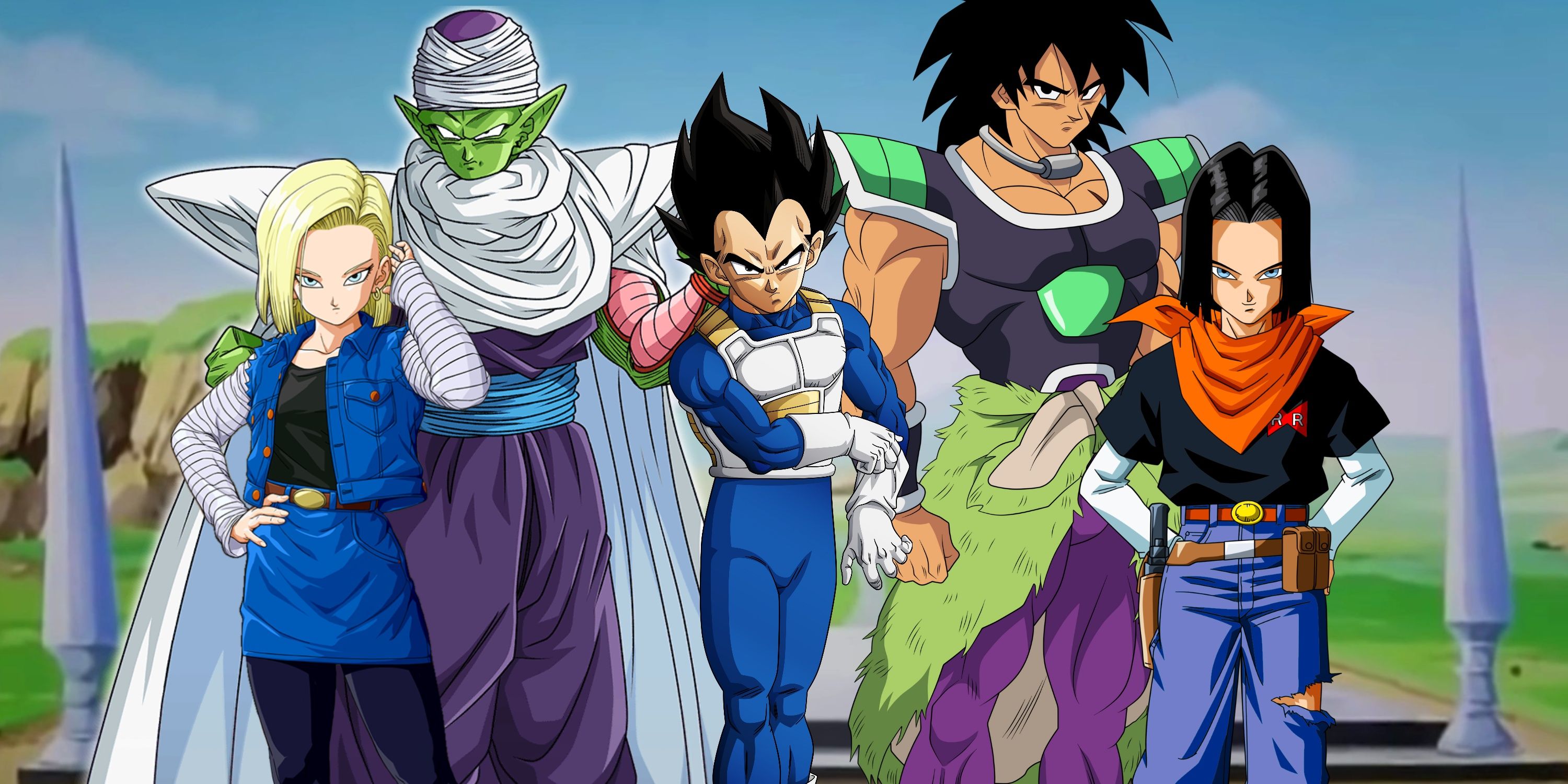
7 Best Anti-Heroes In Dragon Ball
Displaying a complex sense of morality throughout the Dragon Ball franchuse, these characters defy categorization as heroes or villains.
With Super Saiyan God, the Saiyan's hair returned to its shape in their base form, but was colored either magenta-red or crimson-red, with similarly hued irises and an aura that resembles fire itself. Moreover, a user's musculature was also discernibly more lean and youthful, as opposed to the bulkier transformations preceding it.
This transformation signaled a shift towards the use of god ki, continued with the Super Saiyan Blue form, which is similar to the original Super Saiyan state, albeit with blue hair and a fiery electric blue aura. Super Saiyan Rose adopts a similar aesthetic, although its defining shade is pink rather than blue, to differentiate its users as divine beings.
Uniqueness Vs. Impact And Thematic Coherence
An important distinction between some of these forms can be seen in evaluations of how unique they are, coupled with the weight their debut carried in both the manga and anime versions. Super Saiyan 4 was incredibly unique compared to its predecessors, and has long since been hailed as one of the best things to come out of Dragon Ball GT, even if certain aspects of its design and naming have garnered mixed reception.
As the progenitor of this variety of Saiyan transformations, the original Super Saiyan form is simple, refined, and indisputably iconic, to the point where even its diminishing relevance in the context of the series' power scaling has not affected its legacy or recall value. The same cannot be said for the Super Saiyan Second and Third Grade forms, which were made entirely obsolete by Super Saiyan 2.
While Super Saiyan 2 is quite iconic and introduced new elements to the transformation, such as bioelectric sparks, it is still quite similar to its predecessor, despite the monumental impact it had on the narrative. Conversely, the Legendary Super Saiyan transformation did set itself apart with only a slight color change and a more hulking physique, as it remains an icon of the original Broly movie series, and its introduction in Dragon Ball Super could pave the way for it to have a similar impact on the new series.
On the topic of forms featured in Dragon Ball Super, neither Super Saiyan God nor Super Saiyan Blue exhibit much on the design front apart from minor deviations in color scheme and the nature of their associated aura. Lastly, Super Saiyan 3 is undoubtedly one of, if not the most formidable forms in the series based on sheer visual impact, as it carries an otherworldly air to its design, befitting the explosive power it boasted in the context of its introduction. It also has one of the most jaw-dropping transformation sequences in the entire franchise, adding further points to its benefit, despite how impractical and ill-suited it is in most combat situations.
Which Super Saiyan Form Had The Best Design?
All things considered, Super Saiyan 3 might slightly edge out Super Saiyan 4 and the original Super Saiyan as the Super Saiyan form with the best design, due to its incredibly distinctive appearance and the sheer power it radiates from a visual perspective. Following it, the original Super Saiyan form may be second-best due to its cultural impact and role in inspiring every transformation that followed it. Lastly, Super Saiyan 4 is a close third by virtue of how it rewrote the rules for Saiyan forms entirely, fueling further innovation in this department in succeeding installments of Dragon Ball.
Dragon Ball Zcan be streamed on Crunchyroll.
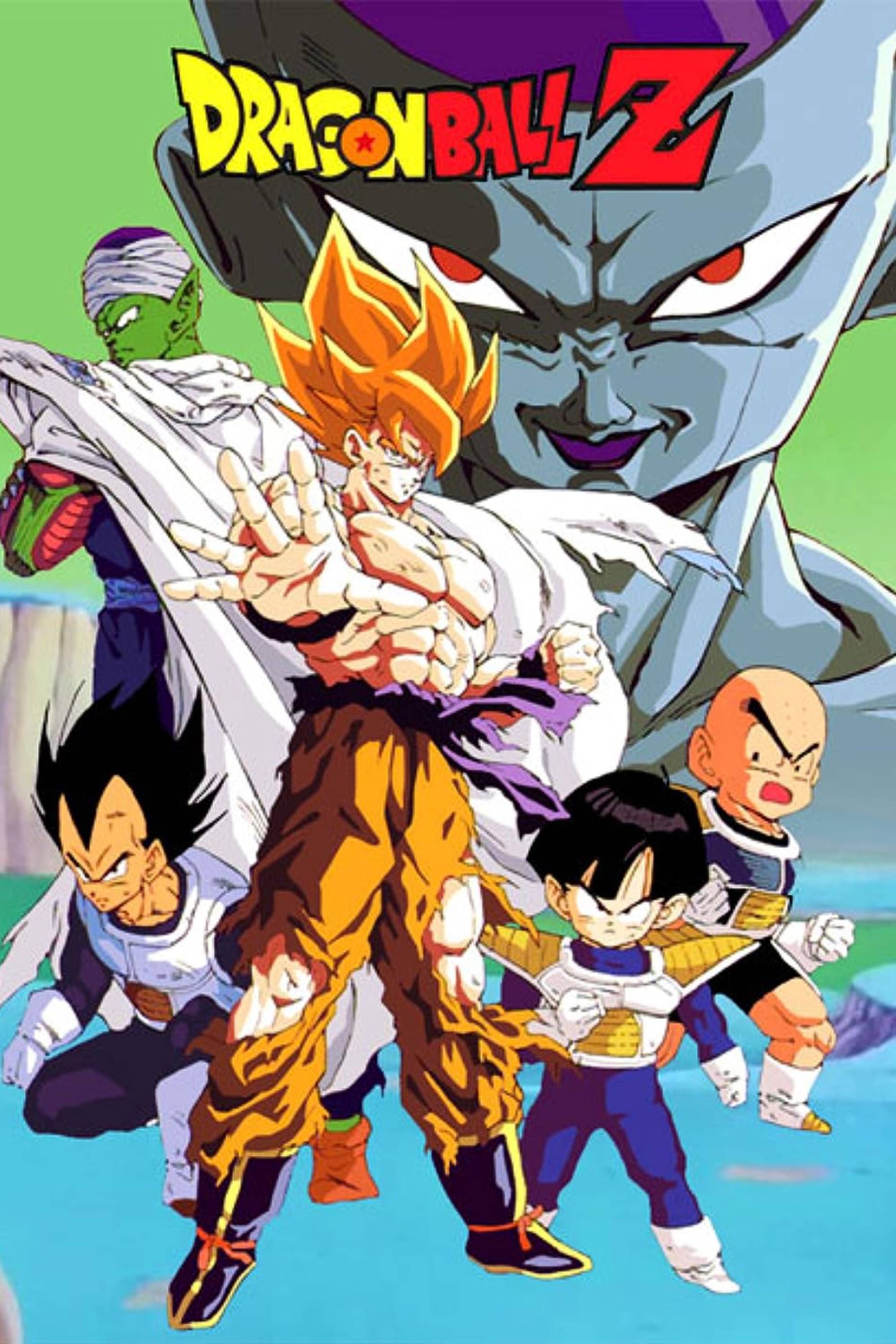
Dragon Ball Z (1989)
Dragon Ball Z is a Japanese anime series produced by Toei Animation and a sequel to the 1986 Dragon Ball series. It continues the adventures of Son Goku as an adult while also paralleling the life of his son Gohan. Son Goku typically defends the Earth from villains like Vegeta, Frieza, Cell, and Majin Buu. The series is followed by Dragon Ball GT and then Dragon Ball Super.
- Release Date
- April 26, 1989
- Studio
- Toei Animation
- Creator
- Akira Toriyama
- Number of Episodes
- 291
- Streaming Service(s)
- Crunchyroll
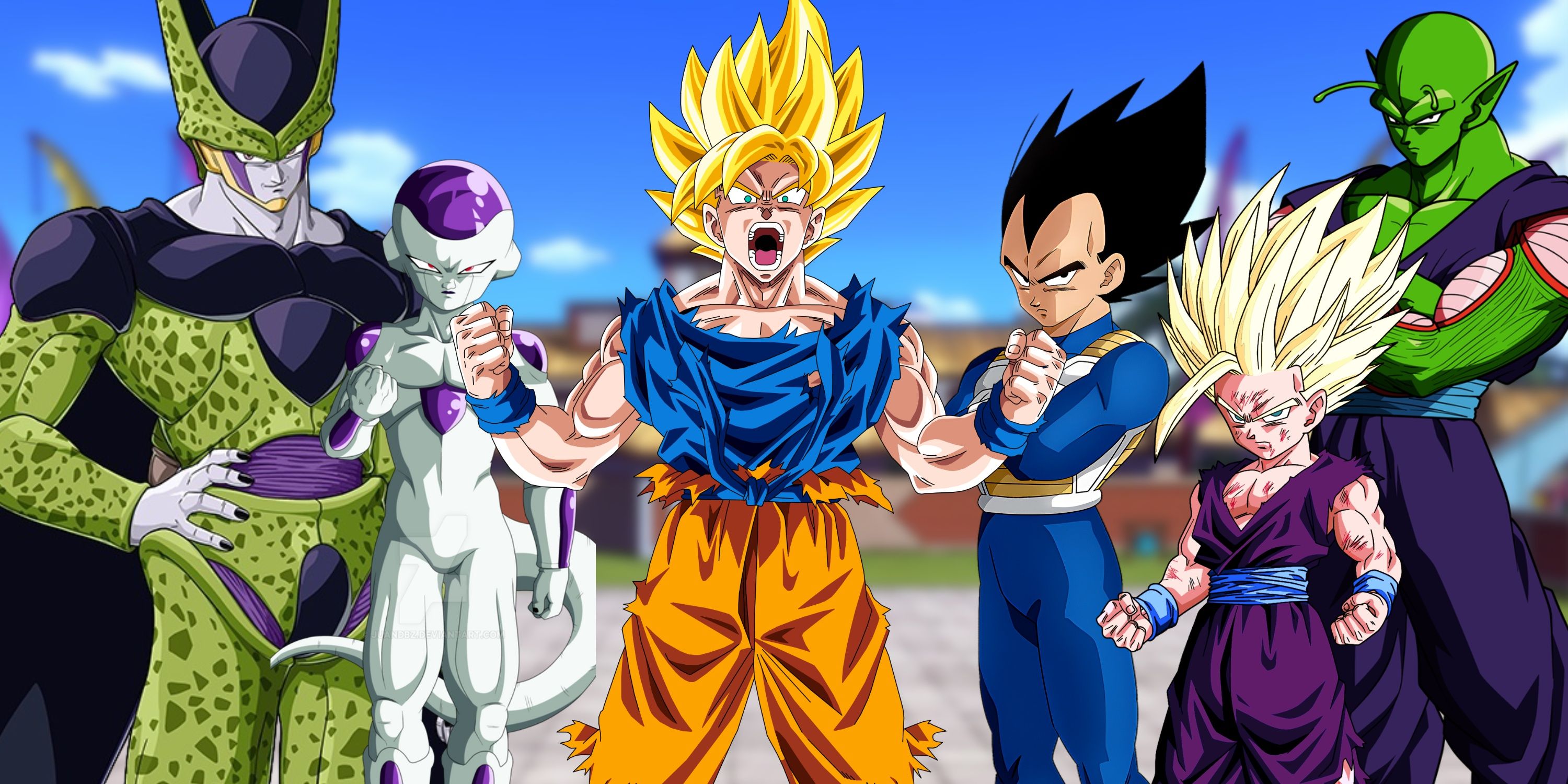
Best Rivalries In Dragon Ball, Ranked
Rivalries are a critical reason for Dragon Ball's success throughout its many installments across mediums, and these are the best ones among them.

